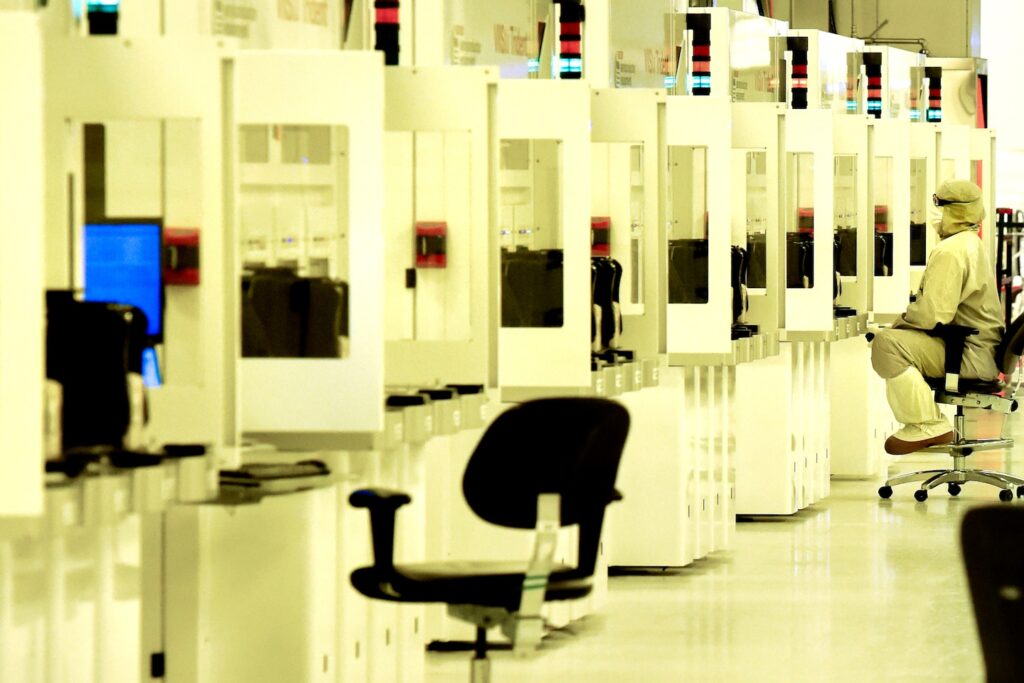Chris Miller is the author of Chip Wars: The Battle for the World's Most Important Technology. Jordan Schneider is the founder of ChinaTalk, a podcast and newsletter about technology and U.S.-China relations. Arian Ebrahimi writes the Chip Capitols newsletter on Substack.
Commerce Secretary Gina Raimondo has described the effort to revitalize the U.S. semiconductor industry as a technological moonshot, modeled after NASA's famous Apollo missions. But the moonshot will only be successful if the people behind it are bold enough to dream and invent innovative technologies.
The Biden administration has begun allocating $39 billion in manufacturing subsidies to semiconductor chipmakers over the next five years through the Chip and Science Act, providing incentives for companies to compete with heavily subsidized East Asian rivals and insurance in case of a Chinese incursion. But in the long run, American success requires maintaining a technological edge, and that means a strong focus on research and development.
The Department of Commerce created the National Semiconductor Technology Center (NSTC) to deploy up to $11 billion in research and development funding allocated by the CHIP Act over the next five years. But what exactly should NSTC do? We believe NSTC should focus on making a big difference, independent of but complementary to industry.
The pace predicted by Moore's Law (the prediction that the computing power of chips will double every few years) is slowing, threatening the trend toward more powerful and cheaper computing power. Sustaining Moore's Law is critical to our nation's future prosperity and security, and to nearly every field of technology. Ensuring the next generation of exponential computing power advances should be a core priority for NSTC.
For the NSTC to have any effect, funding will need to be allocated creatively. The $11 billion the CHIP Act provides for research and development is a fraction of the roughly $60 billion U.S. chip companies spend on such efforts annually. Companies like Intel and Samsung are already among the top 10 R&D spenders in the world. Simply adding NSTC funding to their coffers won't make much of a difference.
Yet most of the companies' R&D dollars go not to “research” — big bets on high-risk, long-term, high-margin technologies — but to “development” — the effort to fine-tune products and bring them to market. This is understandable, since companies exist to bring products to market. But it means that only a small fraction of the industry's vast R&D spending goes to researching innovative technologies that could disrupt existing businesses.
The U.S. government has a storied history of supporting the long-term technological research that made Moore's Law possible. The Defense Advanced Research Projects Agency (DARPA), the research and development arm of the Department of Defense, provided the initial funding for most of the key technologies used in today's most advanced chips. DARPA experts in the 1970s recognized that industry tended to focus on incremental improvements rather than paradigm-shifting innovations. So the agency repeatedly made bets that industry would not make, funding the software tools, computing architectures, and machines needed for far-reaching advances.
NSTC should do the same. But it won't be easy. After exhausting its initial government funding, NSTC will likely rely on industry donations, which will inevitably need money to drive incremental “development” tied to existing product plans. Allowing NSTC to shape its research agenda according to the priorities of major industry funders risks mimicking existing research consortia, which could have limited impact.
Most significantly, it will select transformative research areas and allocate funding in innovative ways. A key goal is to improve the “lab-to-fab” interface and give researchers the opportunity to build prototypes in high-performance commercial chip factories (fabs). This will require new ways of collaborating between universities, startups, industry, and government, which NSTC is ideally positioned to coordinate and fund. However, we need to ensure that these opportunities function as public goods for the entire semiconductor ecosystem and are not monopolized by the largest industry bidders.
The industry naturally wants NSTC to focus on supporting existing roadmaps — memory-chip companies want memory-focused R&D centers, companies that make communications chips want research focused in that direction — but organizing around existing categories would lean NSTC toward incremental improvements rather than new grand bets.
NSTC's biggest investments should go toward capabilities that benefit the entire industry, like AI-enabled chip design tools, as well as developing new materials and tools needed for more precise manufacturing. These capabilities require long-term investments with uncertain payoffs, and venture capital funding is scarce. But it was DARPA's investments in design software and chip manufacturing tools a generation ago that produced the chips that power today's artificial intelligence.
NSTC can also support standardization and data sharing. Companies are often hesitant to share proprietary data. But secure, anonymous data sharing is key to assembling the data sets on chip design and equipment operation needed to realize AI-driven improvements. As a neutral organization, NSTC can play a key role.
The same goes for setting standards. Chiplets (different types of chips that can be combined in a single system) are widely recognized as new territory. But before chips can be mixed and matched to create new combinations, they need to be standardized so that different chips can be seamlessly integrated. To fulfill its standard-setting role, NSTC needs to work closely with industry, but not rely on large companies that tend to maintain the status quo.
There are important gaps in the chip industry that NSTC can fill, but its ambitions can only go as far as its organizational structure will allow. It will need industry support, but in its early days it should establish its independence by focusing on long-term research that can transform entire industries, rather than simply aligning itself to existing corporate roadmaps.
Betting big on moonshot technologies is the only approach that can sustain Moore's Law and ensure America's continued leadership in future technologies.



